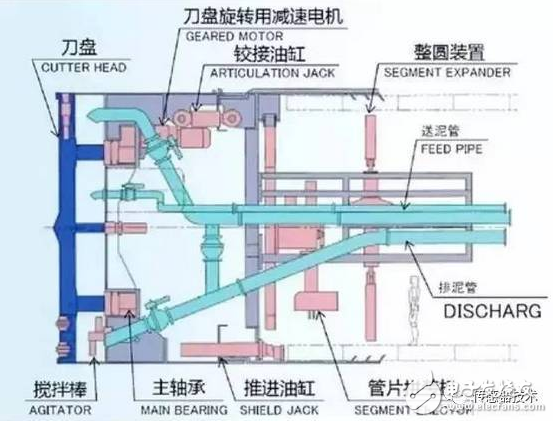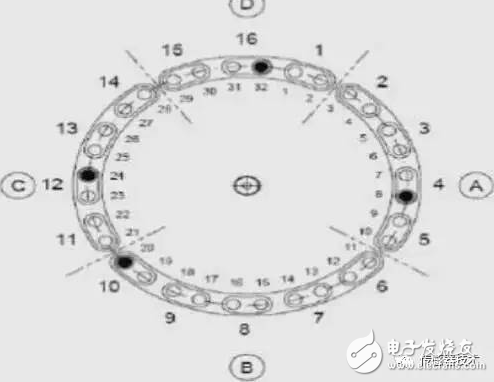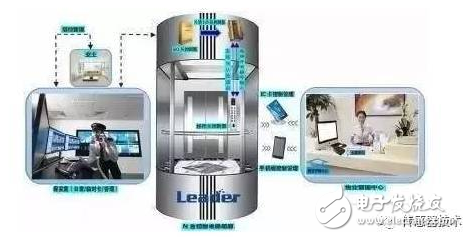There are many types of displacement sensors. In recent years, the application fields have been expanding. More and more innovative technologies have been applied to sensors. We have learned more about various displacement sensors through several typical applications in industrial production.
Application of Displacement Sensor in Shield Machine
In the tunnel construction equipment, different types of shield machines have different structural features and supporting facilities. On some complex shield machines, the functions of the shield machine are systematic and diverse. Including: mechanical, hydraulic, measurement and control functions. For example, on some composite shield machines, there are many functions such as excavation system, main drive system, propulsion system, grouting system and hydraulic system.
As a linear sensor, the displacement sensor is mainly used to measure the mechanical displacement in a linear position. Each cylinder of the shield machine propulsion system is equipped with a displacement sensor for measuring the displacement data when the cylinder is propelled.
The grouping of the shield machine propulsion system cylinders is usually divided as shown in the figure below, top (group A), right (group B), bottom (group C), and left (group D). Each of the cylinders is separately equipped with a displacement sensor.

During propulsion, the propulsion cylinder extends and the support acts on the segment to provide the counterforce of the shield. The pressure of the cylinder can be adjusted independently. By looking at the propulsion data of each group of cylinders monitored by the displacement sensor, the construction personnel can monitor the stroke and pressure of each group in real time in the control room. By adjusting the propulsion pressure and speed of each group of cylinders, the deflection and adjustment of the shield machine can be realized.
Application of Static Magnetic Grid Displacement Sensor in Elevator Control SystemElevator is an important means of transportation in the modern building that is related to the safety of people's lives and property. It is a complete set of equipment for fixed lifting. It consists of lifting traction system, guiding system, safety device and electronic control system. How to improve the operating efficiency of elevators, reduce the energy consumption of elevators, reduce mechanical wear and prolong the service life of elevators are all very important research topics.

At present, the control of the elevator generally adopts two methods. One is to use the microcomputer as the signal control unit to realize the automatic dispatching and collecting operation of the elevator. The drag control is completed by the inverter; the second control mode is programmable. The device (PLC) replaces the microcomputer to realize signal set selection control.
The role of the static magnetic grid displacement sensor in the elevator control system is the adjustment of the elevator level control. The electronic control system is the “central nerve†of the elevator. In order to make the elevator have higher operating efficiency, the acceleration and deceleration should have a suitable limit. And the changes should be smooth, and a well-designed electronic control system is needed.
The magnetostatic grid displacement sensor is used in combination with a “static magneto-gate source†and a “static magnet scaleâ€. "Static magnetic grid source" uses aluminum alloy pressure-sealed passive NdFeB magnetic grid to form a magnetic grid coding array; "Static magnetic scale" is packaged in a special high-strength aluminum alloy tube with built-in embedded microprocessor system, using switch type The Hall sensor component forms a Hall code array, and the aluminum alloy pipe is externally treated with an anti-oxidation plating process. "Static magnetic grid source" along the "static magnetic scale" axis for contactless (relative gap latitude and relative attitude latitude up to 50mm) relative motion, the "static magnetic scale" resolves the digital displacement information, directly produces high A digital signal of displacement in the order of millimeters. Fully explore the resources of embedded microprocessors and increase the data update speed to the order of milliseconds so as to be able to adapt to the displacement response of motion speeds below 5m/S.
The control part of the elevator level control system is the static magnetic grid displacement sensor. The installation diagram is shown below.

The static magnetic grid source is installed in parallel with the outdoor shaft of the elevator shaft. One layer per layer, the static magnetic scale is installed on the car, the length is 1.2 meters, and two static magnetic grid sources are installed in the underground layer to detect whether the car is in the bottom position. And the direction of movement.
Since the operation of the elevator is controlled according to the call signal and the travel signal of the floor and the car, and the call of the floor and the car is random, the system control uses random logic control. That is, on the basis of implementing the basic control requirements of the elevator by sequential logic control, the operation of the elevator is controlled according to the random input signal and the corresponding state of the elevator. In addition, the position of the car is determined by the magnetostatic grid displacement sensor and sent to the counter of the PLC for control. At the same time, a magnetostatic grid source is placed on each floor to detect the floor signal of the system.
The elevator level control is realized by a static magnetic grid displacement sensor. The intelligent control of the elevator can be realized, the elevator runs comfortably, and the comfort of starting, deceleration and leveling does not change due to the change of the car load.
Earphones Plug Wireless,Wireless Earphone,Earphones For Iphone,Earphone For Samsung,wireless bluetooth earphone
Shenzhen Konchang Electronic Technology Co.,Ltd , https://www.konchang.com